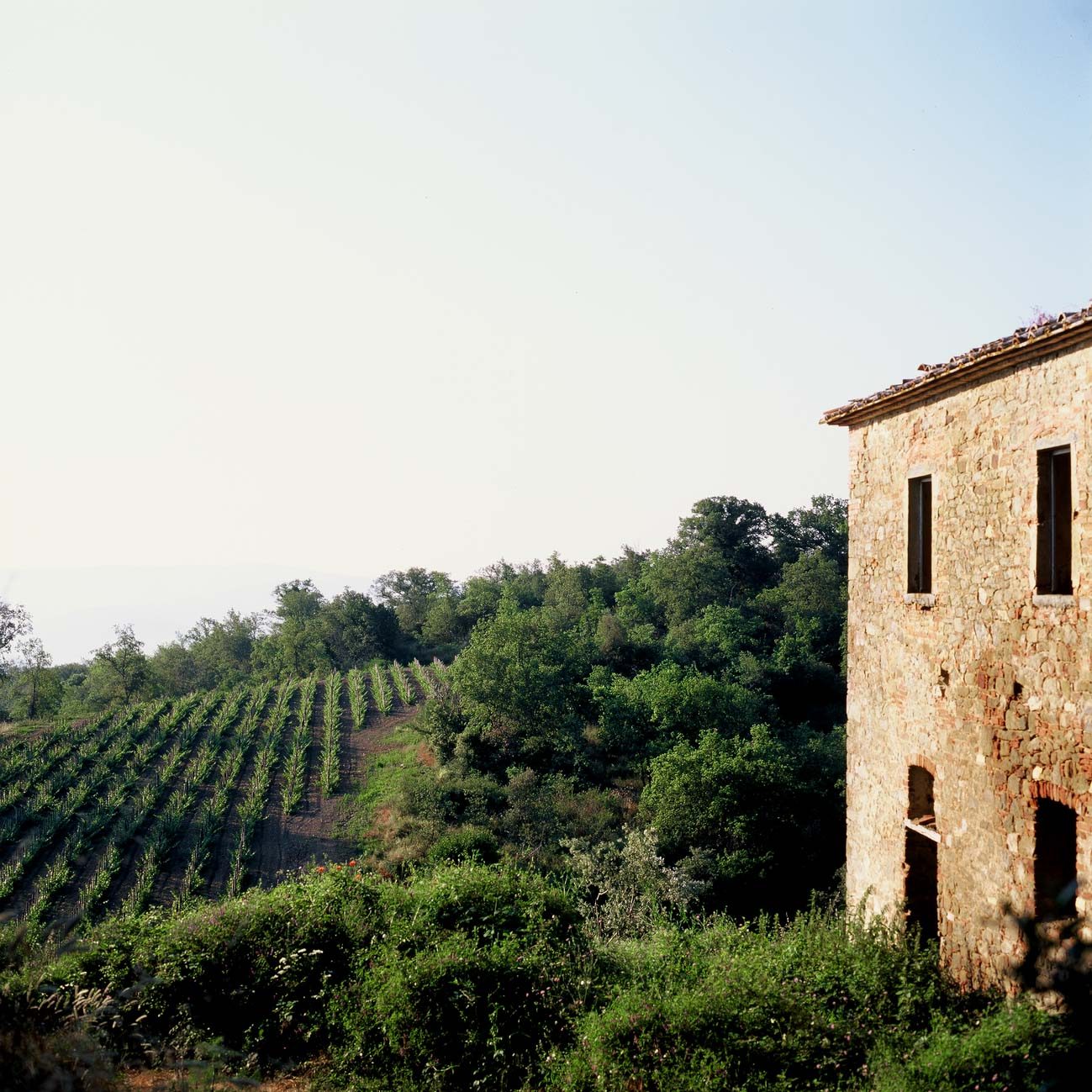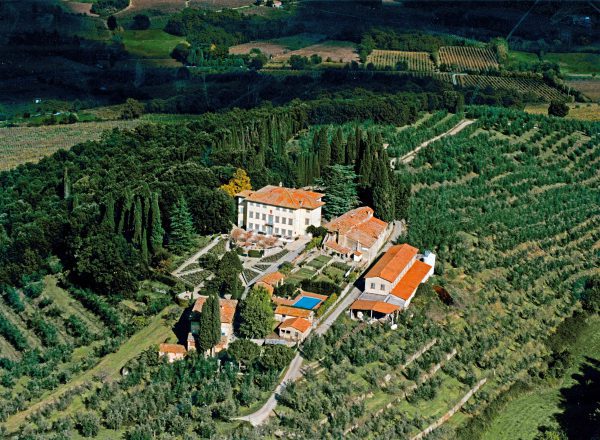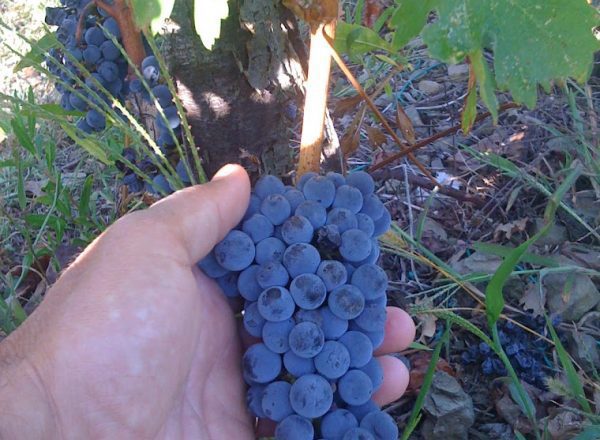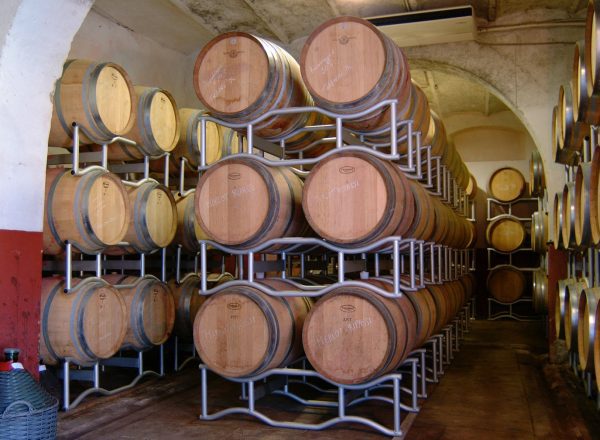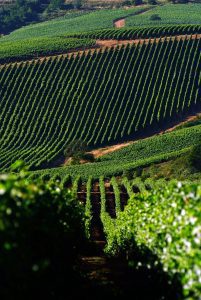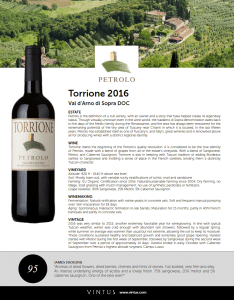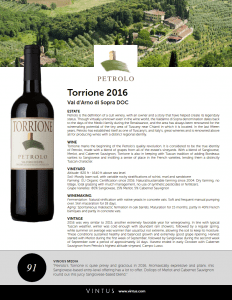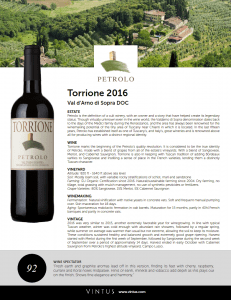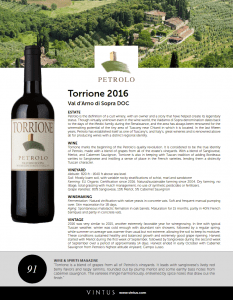
Petrolo
Torrione 2016
Val d'Arno di Sopra DOC
Torrione marks the beginning of the Petrolo’s quality revolution. It is considered to be the true identity of Petrolo, made with a blend of grapes from all of the estate’s vineyards. With a blend of Sangiovese, Merlot, and Cabernet Sauvignon, Torrione is also in keeping with Tuscan tradition of adding Bordeaux varieties to Sangiovese and instilling a sense of place in the French varieties, lending them a distinctly Tuscan character.
VINEYARD
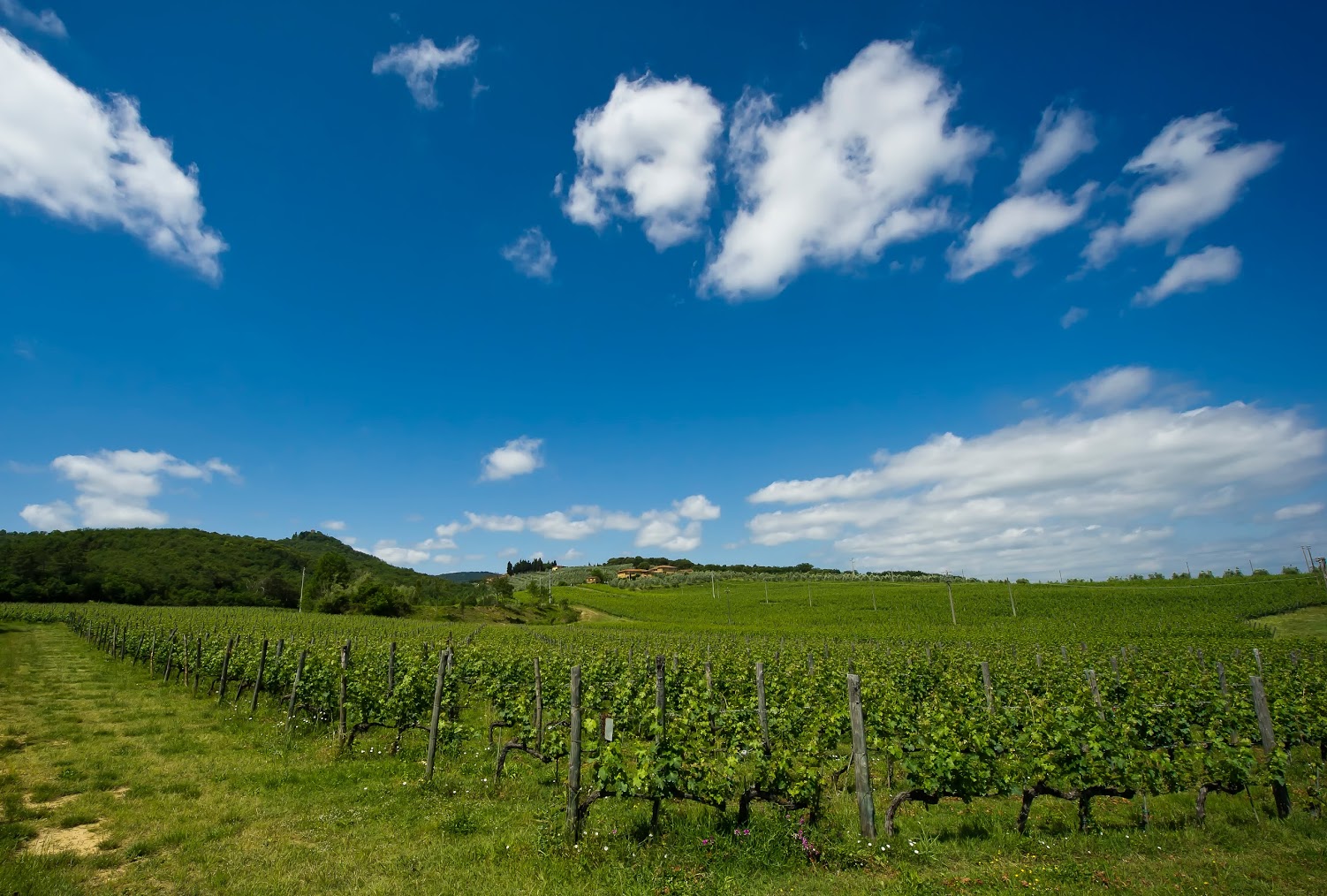
At an altitude of 820 ft – 1640 ft above sea level, the soil is mostly loam, with variable rocky stratifications of schist, marl and sandstone. EU certified organic farming as of the 2016 vintage. Natural/sustainable farming since 2004. Dry farming, no tillage, total grassing with mulch management, no use of synthetic pesticides or fertilizers.
WINEMAKING
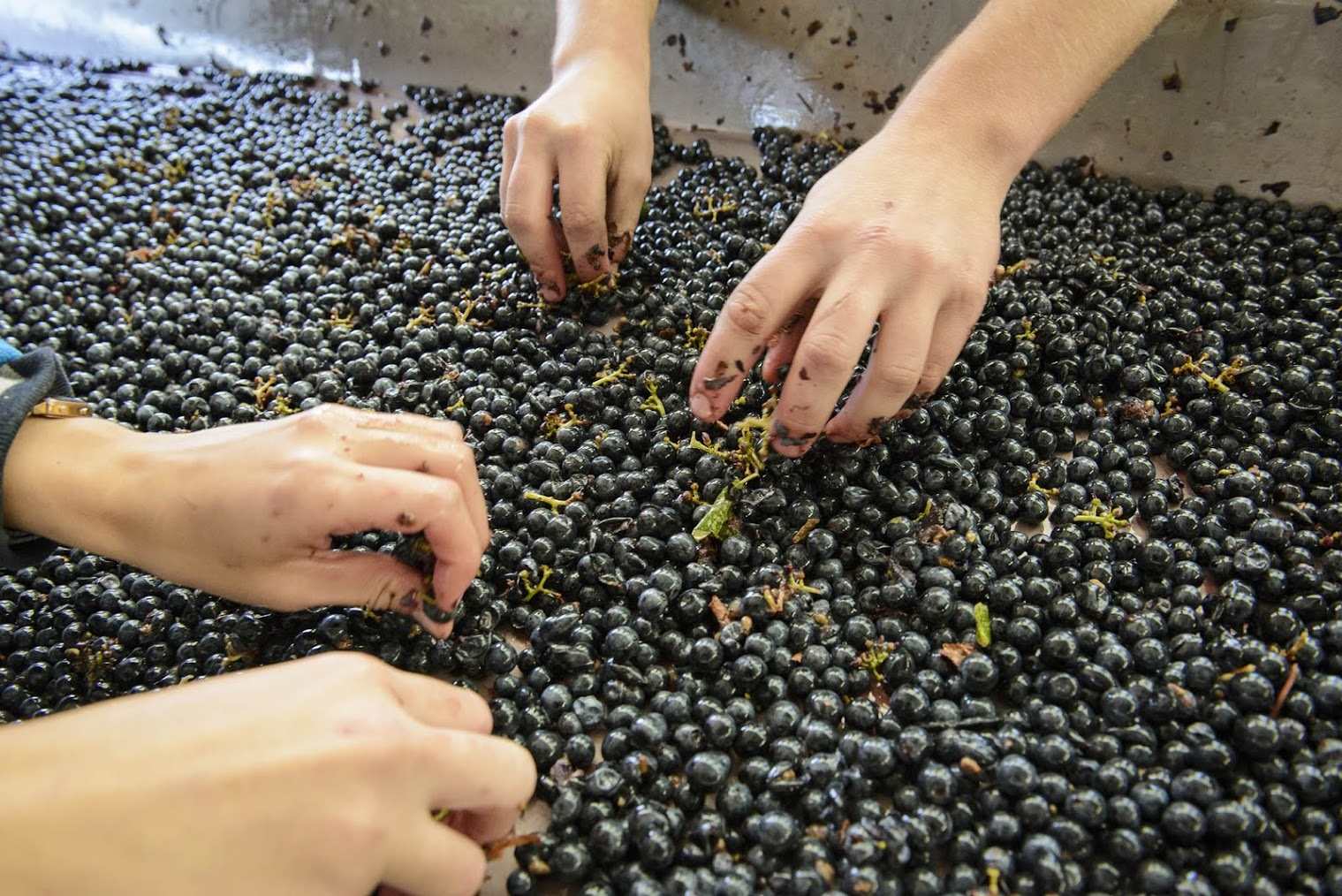
Manual harvest in crates. Grape selection & sorting table. Natural vinification with native yeasts in concrete vats. Soft and frequent manual pumping over. Skin maceration over 18 days. Aging: 15 months, part in French oak barriques, part in 40 Hl oak barrels and partly in concrete vats.
TASTING NOTE
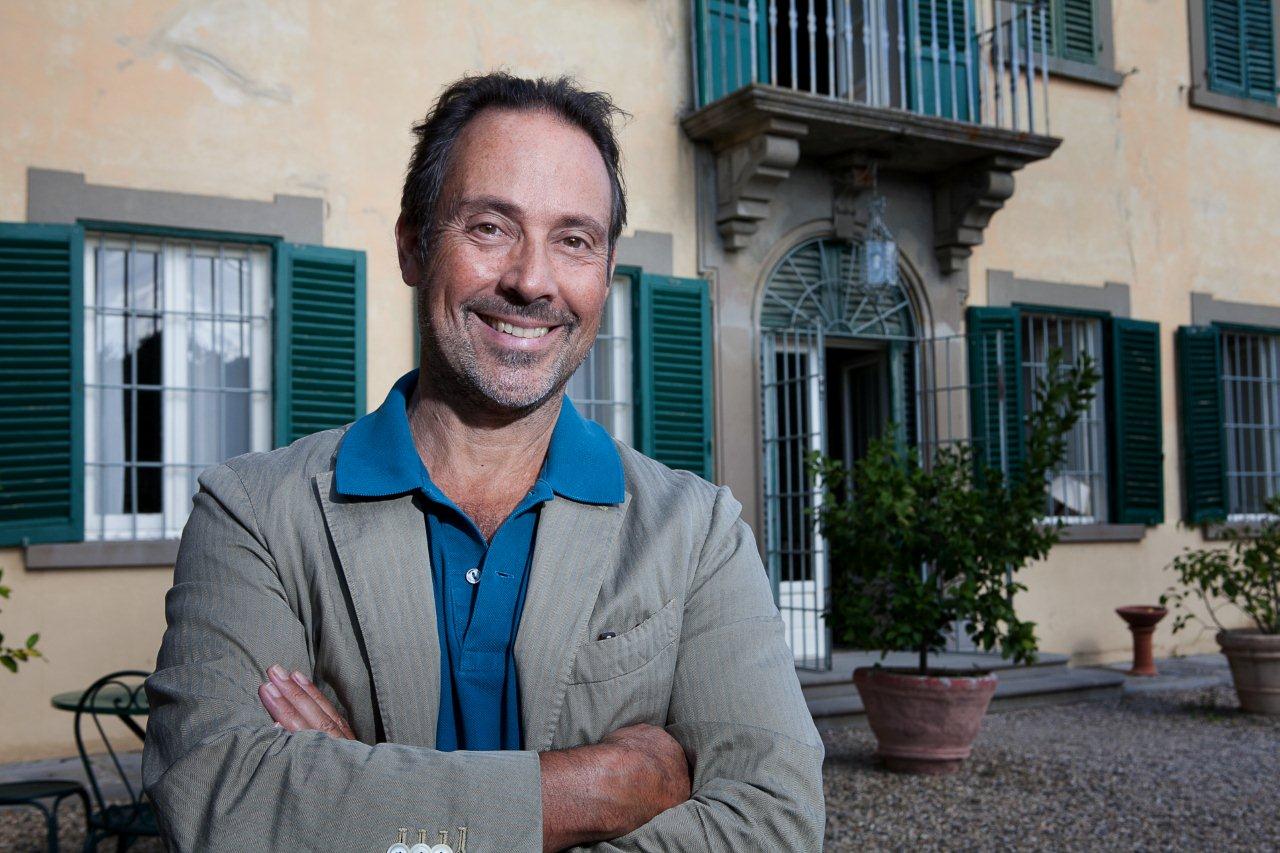
Aromas of dried flowers, dried berries, cherries and hints of stones. Full-bodied, very firm and silky. An intense underlying energy of acidity and a lovely finish. 75% sangiovese, 20% merlot and 5% cabernet sauvignon. One of the best ever?
-James Suckling
Color
Red
Appellation
Val d'Arno di Sopra DOC
Farming
Organic
Alcohol
13%
Suggested Retail Price
$35.00
Reviews
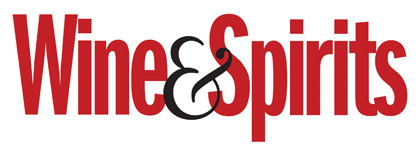
Wine & Spirits - March 18, 2019 "Torrione is a blend of grapes from all of Petrolo’s vineyards. It leads with sangiovese’s lively red berry flavors and raspy tannins, rounded out by plump merlot and some earthy bass notes from cabernet sauvignon. The varieties mingle harmoniously, enlivened by spice notes that draw out the finish."
"plush and rich"

Wine Advocate - June 5, 2019 "The bouquet opens to ripe cherry and dried raspberry with moist earth, exotic spice and chewing tobacco. The wine is plush and rich with a hint of that tangy Sangiovese acidity on the close."
Reviews
More on Petrolo Torrione 2016
James Suckling’s 100 Best Wines Under $30
January 8, 2019 - Dog Point Chardonnay 2016 (95 Points), Errazuriz Pinot Noir Aconcagua Costa 2017 (94 Points), and Petrolo Torrione 2016 (95 Points) were all featured in James Suckling's list of 100 Best Wines…
Petrolo’s Luca Sanjust on the 2016 Vintage
January 8, 2019 - Enjoy this informative video featuring Petrolo's Luca Sanjust's insights and commentary on the 2016 vintage.
Trade Materials
Other Wines by this Producer

Bòggina B
Toscana IGT
Bòggina B is a little bit of Burgundy with a Tuscan twist. The wine is made with 100% Trebbiano Toscano. The clone of the Valdarno has been known for its quality since the 1300s, when it was regularly sent to the popes in Rome and the courts of Florence. Petrolo has been using Trebbiano grapes for its sweet vinsanto for decades, but owner Luca Sanjust decided that the time had come for a tribute to the great whites of Valdarno’s past. The wine is made under the guidance of one of Burgundy’s greats, Mounir Souma of Lucien Le Moine.
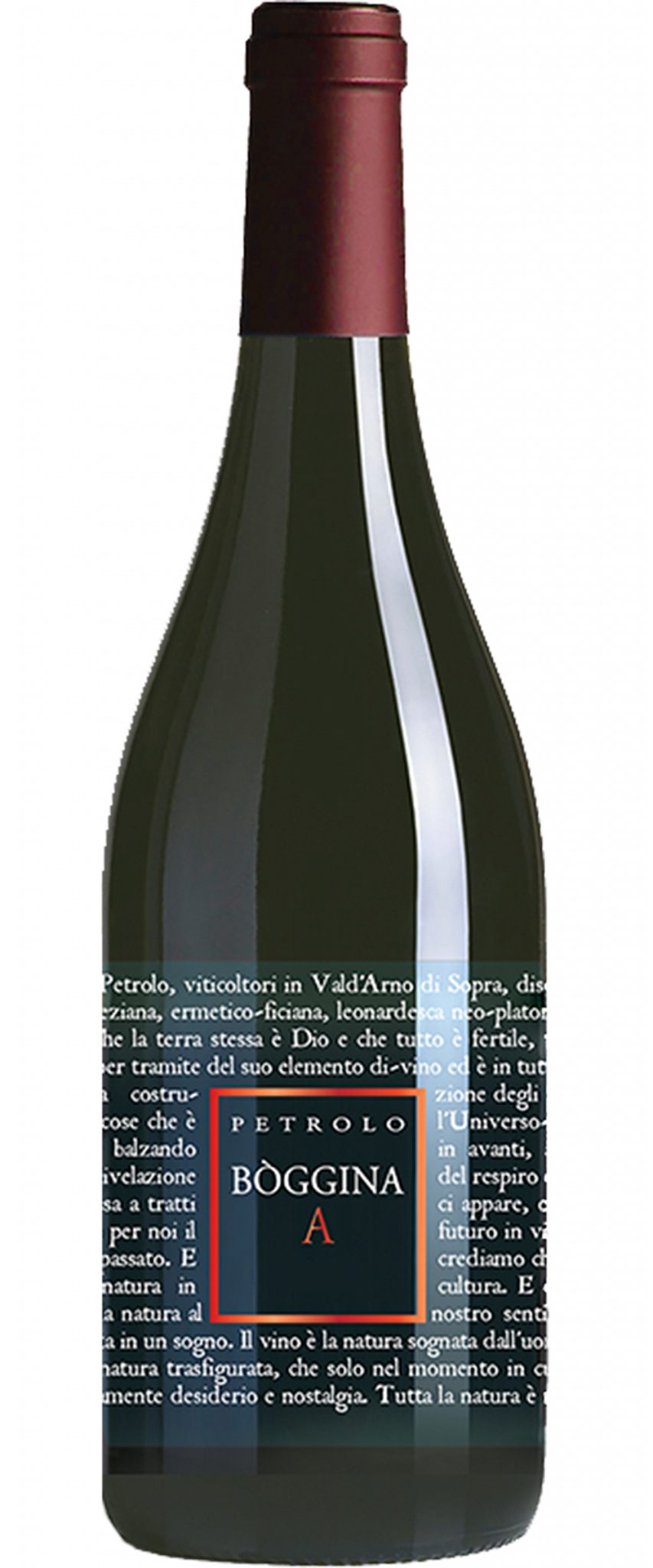
Bòggina A
Val d'Arno di Sopra
Every year, Petrolo selects a small lot of Bòggina, a wine made purely from their best Sangiovese grapes, to ferment in amphorae. The choice of amphorae has a historical dimension to get closer to Tuscany's cultural roots, as Terracotta in Tuscany has a history back to the early Etruscan times. The remains of amphorae and other Etruscan relics can be found throughout the Petrolo property, an area that has been settled for thousands of years.
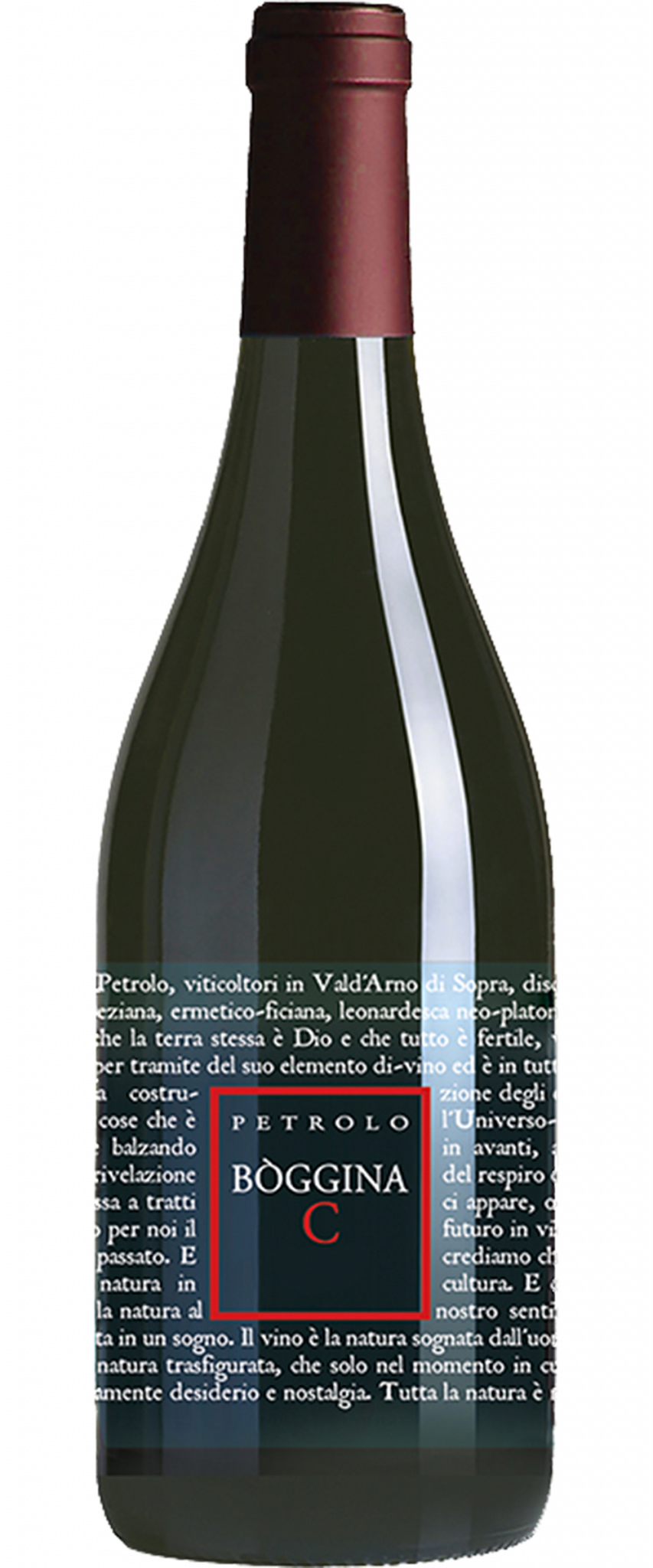
Bòggina C
Val d'Arno di Sopra
Boggina is bottled from the best barrels of Sangiovese produced each year from the Boggina hill, planted in the 1950’s by Luca’s grandfather. Bòggina is the oldest vineyard on the Petrolo estate, and the source of Petrolo’s most prized Sangiovese vines.
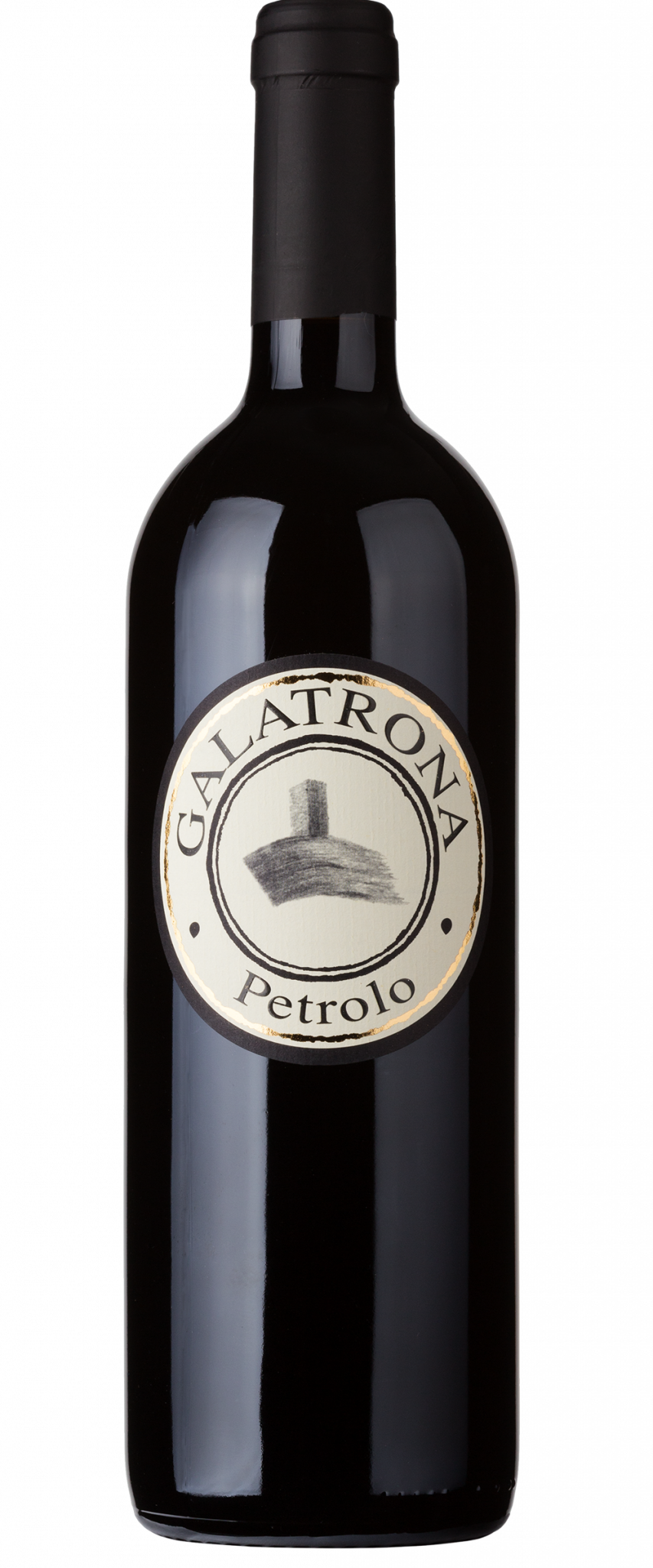
Galatrona
Val d'Arno di Sopra
Galatrona is a cru made entirely from Merlot grapes coming exclusively from a single vineyard planted in the early ‘90s. Year after year, it is recognized critically (the “Le Pin of Tuscany” by Wine Spectator, for example) but, more importantly, understood as being a reflection of its site far more than its grape varietal.
